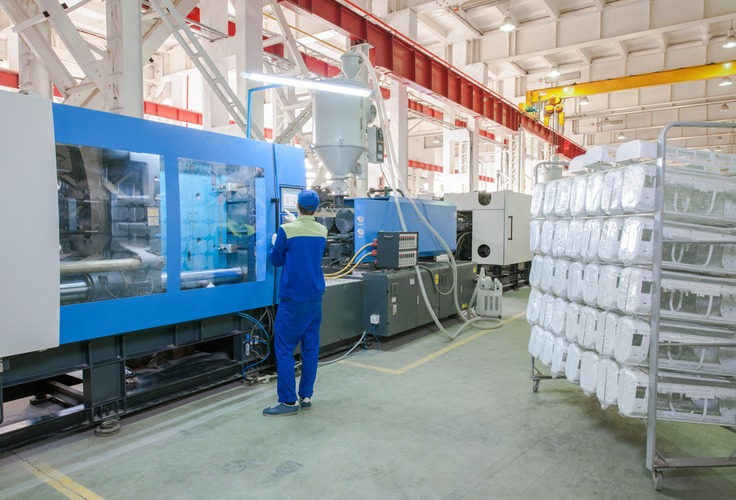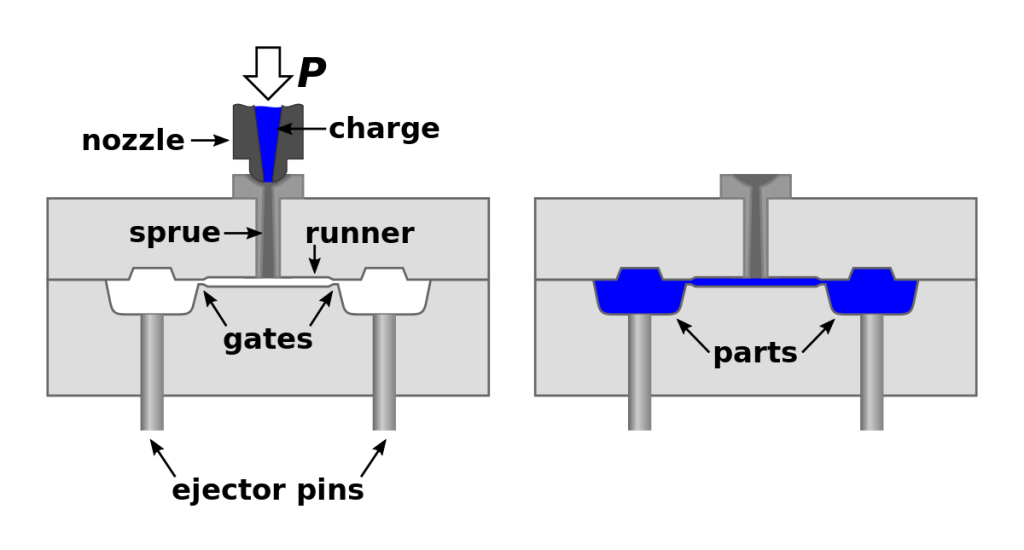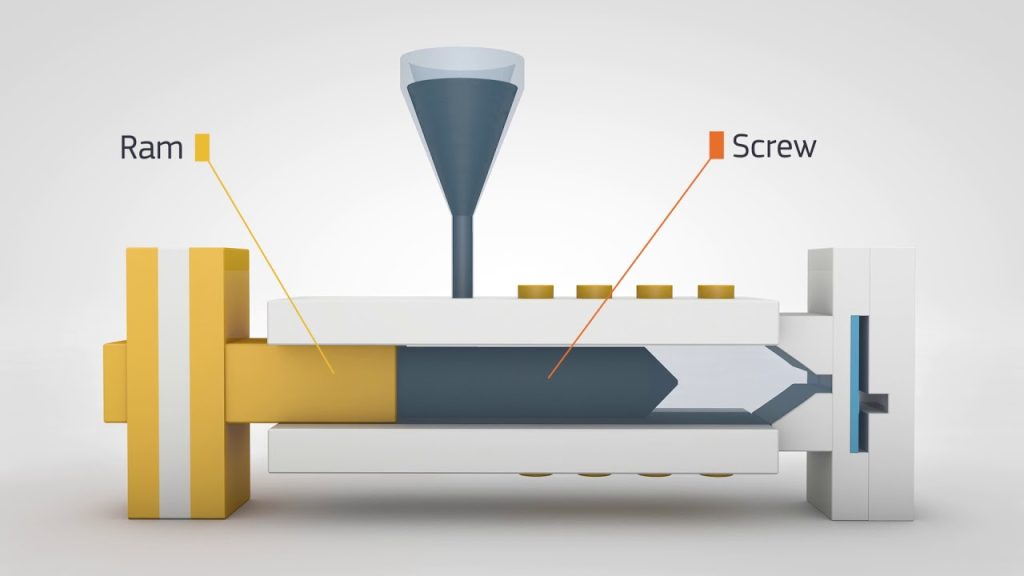Table of Contents
Are you interested in starting a profitable and rewarding business in the manufacturing industry? Look no further than injection molding. This process involves melting plastic material and injecting it into a mold to create a wide range of products. From toys to car parts, the possibilities are endless. But where do you begin? With this comprehensive guide, we’ll walk you through the steps of starting your own injection molding business, from market research to finding the right equipment and materials. Get ready to turn your entrepreneurial dreams into a reality!
- Research and analyze the market demand for your services
- Develop a business plan and secure funding
- Choose a suitable location and set up your facility
- Purchase or lease equipment and hire skilled workers
- Obtain necessary permits and certifications
- Source raw materials and establish relationships with suppliers
- Market your services and build a customer base
Starting an Injection Molding Business: A Comprehensive Guide
Injection molding is a manufacturing process that involves the production of plastic parts by injecting molten plastic material into a mold. The process is widely used in the manufacturing of different products, including automotive components, medical devices, toys, and household items. If you’re interested in starting an injection molding business, this guide will provide you with essential information to get started.
1. Market Research and Feasibility Study
Before starting an injection molding business, it’s important to conduct market research and feasibility studies. This will help you understand the market demand, competition, and potential profitability of the business. You should also research the types of products that are in high demand, the target audience, and their preferences.
Once you’ve conducted your research, you should create a business plan that outlines your objectives, marketing strategies, and financial projections. Your business plan should also include a detailed analysis of your competition, sales projections, and expected expenses.
2. Legal Requirements and Permits
Starting an injection molding business requires compliance with various legal requirements and permits. You should register your business with the appropriate authorities and obtain necessary permits and licenses. This includes registering your business with the state and local authorities, obtaining a tax ID number, and obtaining permits for waste disposal, environmental compliance, and other relevant permits.
You should also ensure that you comply with labor laws, safety regulations, and environmental regulations. Failure to comply with these regulations can result in fines, penalties, and legal action.
3. Equipment and Machinery
To start an injection molding business, you’ll need to invest in equipment and machinery. This includes injection molding machines, molds, and auxiliary equipment such as temperature controllers, conveyors, and robots. The cost of the equipment and machinery can vary depending on the size of your operation and the types of products you’re manufacturing.
You should research different manufacturers and suppliers to find equipment and machinery that meets your requirements and budget. You should also consider the cost of maintenance, repairs, and replacement parts when selecting equipment and machinery.
4. Raw Materials and Suppliers
Injection molding requires the use of raw materials such as plastic resins, colorants, and additives. You should research different suppliers to find high-quality raw materials that meet your requirements and budget. You should also consider the availability of the raw materials and the reliability of the suppliers.
You should also consider the cost of the raw materials and the impact on your profitability. You may be able to negotiate better prices with suppliers by ordering in bulk or establishing long-term partnerships.
5. Manufacturing Processes and Quality Control
Injection molding involves several manufacturing processes, including mold design, tooling, molding, and finishing. You should establish standard operating procedures (SOPs) for each process to ensure consistency and quality. You should also establish a quality control system to ensure that the final products meet the required specifications and standards.
You should also consider implementing a lean manufacturing system to reduce waste, increase efficiency, and improve profitability. This involves identifying and eliminating any non-value-added activities and optimizing the production process.
6. Sales and Marketing Strategies
To succeed in the injection molding business, you’ll need to develop effective sales and marketing strategies. You should identify your target audience and develop a marketing plan that includes advertising, promotions, and sales tactics. You should also consider attending trade shows and exhibitions to showcase your products and network with potential customers.
You should also establish partnerships with other businesses and suppliers to expand your customer base and increase your revenue. You should also consider offering value-added services such as product design, prototyping, and testing to differentiate yourself from your competitors.
7. Financial Management and Budgeting
Starting an injection molding business requires a significant investment of capital. You should create a detailed financial plan that includes a budget, cash flow projections, and expected return on investment. You should also consider the impact of inflation, interest rates, and currency fluctuations on your profitability.
You should also establish financial controls and accounting procedures to ensure that you’re managing your finances effectively. This includes monitoring your expenses, tracking your revenue, and maintaining accurate records.
8. Human Resources and Staffing
Starting an injection molding business requires a skilled workforce that includes technicians, operators, and managers. You should develop a staffing plan that includes job descriptions, qualifications, and compensation packages. You should also consider offering training and development programs to improve the skills and knowledge of your staff.
You should also implement a performance management system that includes performance metrics, feedback, and incentives. This will help you assess the performance of your staff and motivate them to achieve their targets.
9. Risk Management and Insurance
Starting an injection molding business involves several risks, including equipment breakdown, product defects, and safety hazards. You should develop a risk management plan that includes risk assessment, risk mitigation, and contingency planning. You should also obtain insurance coverage that includes liability, property, and worker’s compensation insurance.
You should also establish safety procedures and protocols to ensure that your staff and customers are safe. This includes providing safety equipment such as gloves, goggles, and safety shoes, and implementing safety training programs.
10. Scaling and Growth Strategies
Once you’ve established your injection molding business, you should consider scaling and growth strategies. This includes expanding your product line, entering new markets, and increasing your production capacity. You should also consider investing in research and development to identify new opportunities and improve your products.
You should also establish partnerships and joint ventures to expand your reach and leverage your resources. This will help you achieve your growth objectives and increase your profitability.
In conclusion, starting an injection molding business requires careful planning, research, and investment. By following these essential steps, you can establish a successful and profitable business that meets the needs of your customers and the market.
Frequently Asked Questions
Starting an injection molding business can be a lucrative venture, but it requires careful planning and research. Here are some common questions and answers that can help you get started.
What is Injection Molding?
Injection molding is a manufacturing process that involves injecting molten plastic into a mold cavity to create a specific shape or design. The process is widely used in the production of plastic parts for a variety of industries, including automotive, medical, and consumer products.
To start an injection molding business, you need to have a good understanding of the process and the equipment involved. You should also have experience in manufacturing, engineering, or product design to ensure that you can create high-quality parts that meet your customers’ specifications.
What are the Startup Costs?
The startup costs for an injection molding business can vary depending on the size and scope of your operation. Some of the major expenses you will need to consider include purchasing or leasing a facility, buying injection molding machines and other equipment, hiring staff, and obtaining necessary licenses and permits.
You may also need to invest in marketing and advertising to promote your business and attract customers. It’s important to create a detailed business plan and budget to help you determine your startup costs and secure financing if needed.
How Do I Find Customers?
One of the keys to success in an injection molding business is building a strong customer base. You can start by networking with other professionals in your industry and attending trade shows and conferences to showcase your products and services.
You can also reach out to manufacturers and other businesses that need plastic parts and offer to provide them with custom solutions. Creating a website and social media presence can also help you connect with potential customers and showcase your capabilities.
What are the Legal Requirements?
Starting an injection molding business requires compliance with a range of legal requirements at the federal, state, and local levels. You will need to obtain any necessary business licenses and permits, register your business with the appropriate agencies, and comply with environmental and safety regulations.
You may also need to obtain insurance and establish contracts with suppliers and customers. It’s important to work with an attorney and accountant to ensure that you are meeting all legal requirements and protecting your business interests.
What are the Challenges?
Starting an injection molding business can be challenging, particularly if you are new to the industry. Some of the major challenges you may face include competition from established businesses, regulatory compliance, and managing costs and cash flow.
You will need to be prepared to invest time and resources into building your business and establishing a strong reputation in your industry. It’s important to stay up-to-date on industry trends and emerging technologies to ensure that you can provide your customers with the best possible products and services.
In conclusion, starting an injection molding business can be a challenging task, but with the right mindset and guidance, it can be a highly successful venture. It is essential to conduct thorough research and understand the market demand for your products. Additionally, you need to invest in the right equipment and hire a team of highly skilled professionals to help you achieve your goals.
Furthermore, it is crucial to establish a solid business plan that outlines your objectives, financial projections, and marketing strategies. This will help guide your decision-making process and ensure that you stay on track towards achieving your business goals. Remember, a well-executed business plan can serve as a roadmap for success.
Finally, it is essential to stay up-to-date with the latest trends and technologies in the injection molding industry. This will help you stay ahead of the competition and offer your customers the best possible products and services. With hard work, dedication, and the right resources, starting an injection molding business can be a lucrative and rewarding career path.
Request a quote today!
[contact-form-7 id="1578" title="Contact form"]
Please compress the file into a ZIP or RAR file before uploading. Alternatively, send through your RFQ by email.
enquires@unitymanufacture.com





